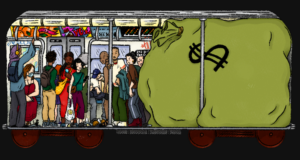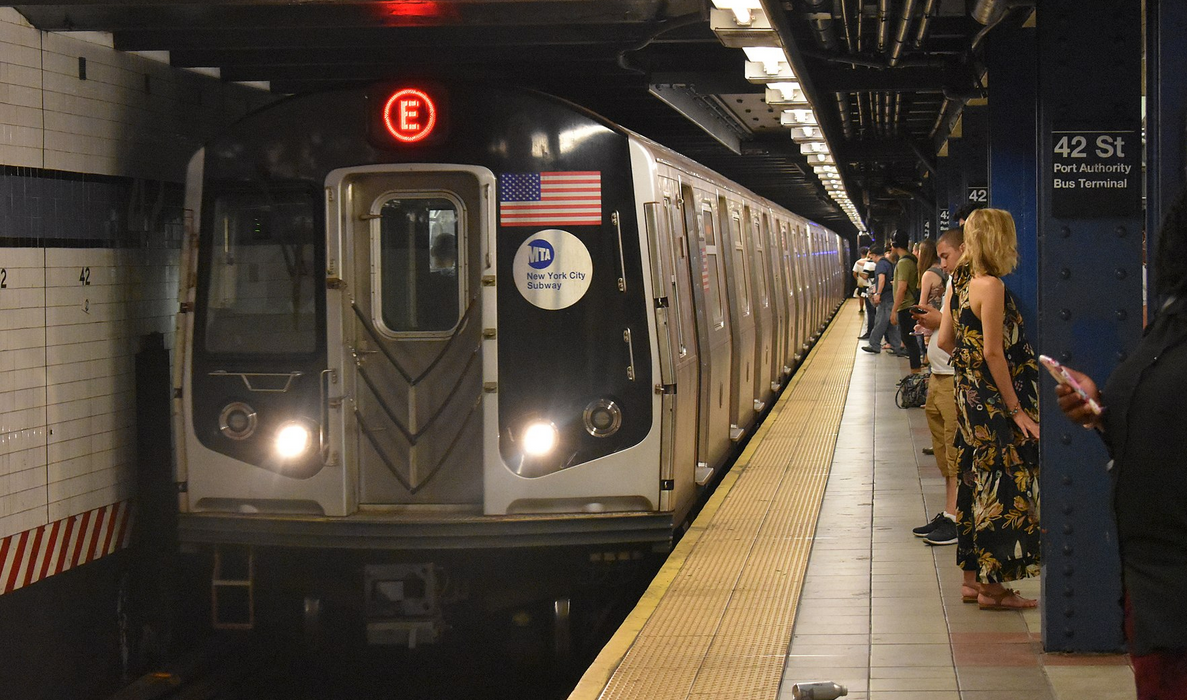Photos: WNYC\Wikimedia Commons
When you cover mass transit in New York City, you get used to writing about the aspects of the MTA that are most visible to riders: Fares, service changes, and the bureaucracy.

You cover human interest stories where the city’s culture and transportation networks intersect, like the MTA’s inevitable plan to phase out so-called “conversational seating” on the subways, or ad campaigns on trains and buses.
Much of the coverage centers on what the MTA builds — or, in many cases, fails to build. But there’s a huge aspect of transit in New York that often goes overlooked in daily coverage: The MTA’s ever-growing pile of debt.
Debt payments are expected to cost the MTA $3 billion this year. The agency spends more to pay off its debt each year than anything else aside from wages and benefits for the 70,000 workers who run its subways, buses, commuter railroads, bridges and tunnels.
It’s a complicated subject — but it’s worth looking at because every dollar the MTA pays the banks for its debt is a dollar that can’t be used to get New Yorkers where they need to go. And history shows when finances are tight, the MTA regularly threatens to cut service and jobs — but not its debt payments.
So WNYC and Gothamist decided to dive into what exactly that money pays for, and how the debt grew so large. Like much of the MTA, the information on the history of its debt is not easily accessible.
We dug up decades of records at the city’s municipal archives on Chambers Street. Our in-house archivist Andy Lanset digitized 40-year-old cassette tapes with recordings of everyday New Yorkers raising concerns when the MTA first started taking on debt in the 1980s. We asked the architect of the whole debt scheme how it was formed.
And we talked with people who’ve been watching the MTA for decades to get their thoughts about how a plan to save the subways from complete failure now eats up so much of the budget.
We hope our reporting can help demystify the MTA’s byzantine finances so New Yorkers can be better informed about the government agencies designed to keep the city moving.
– Stephen Nessen, Transportation Reporter







